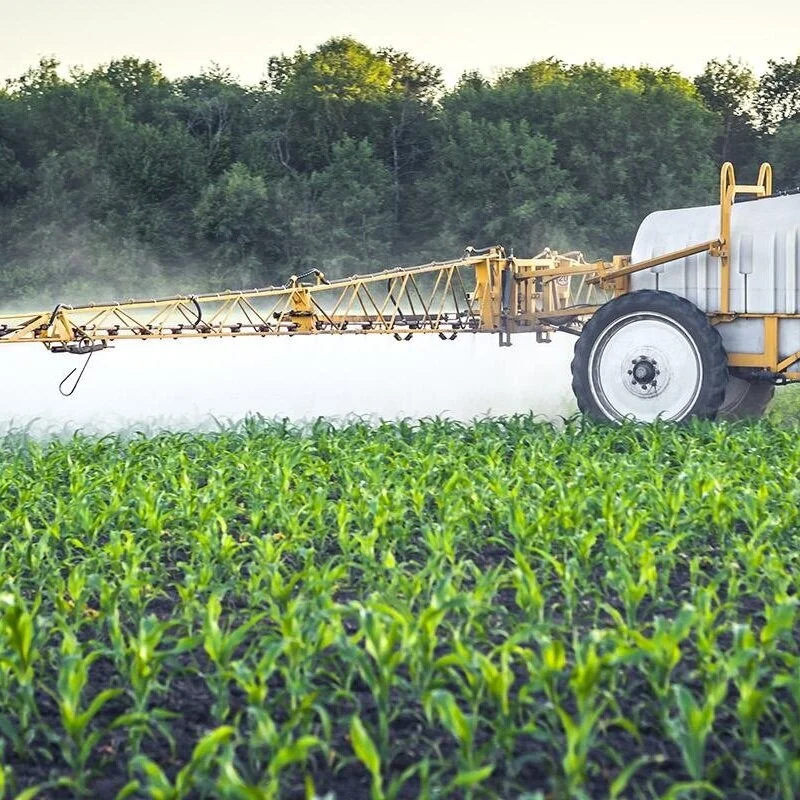The continuing resolution passed by Congress September 20, 2021 to fund the federal government included $10 billion to fund the Wildfire and Hurricane Indemnity Program Plus, better known as WHIP+. This funding is important for Louisiana’s farmers and ranchers affected by the 2020 hurricanes Laura, Delta and Zeta, as well as the 2021 ice storm.
Read MoreOn Thursday, the USDA pegged the U.S. soybean ending stocks, as of Sept. 1, higher than the trade estimates.
As a result of today's USDA Quarterly Grain Stocks Report, the CME Group’s soybean complex traded lower, following the report.
Agriculture Secretary Tom Vilsack today announced a comprehensive set of investments to address challenges facing America’s agricultural producers. These include assistance to address challenges and costs associated with drought, animal health, market disruptions for agricultural commodities, and school food supply chain issues. Secretary Vilsack also outlined and requested public comments on a new climate partnership initiative designed to create new revenue streams for producers via market opportunities for commodities produced using climate-smart practices.
Read MoreUSDA’s Risk Management Agency is extending the crop insurance deadline for fall planted crops in the Hurricane Ida impacted parishes to October 29th.
Hurricane Ida, a Category 4 hurricane, damaged infrastructure in parts of Louisiana, impacting transportation, electricity and other utilities, and communications. Additionally, some producers are required to make changes to their existing crop insurance policies to meet the linkage requirements for the Farm Service Agency (FSA) Quality Loss Adjustment (QLA) program and Wildfire and Hurricane Indemnity Program-Plus (WHIP+). The limited mobility and communication issues due to Hurricane Ida, coupled with ongoing pandemic restrictions, has hindered the ability for producers to meet with their crop insurance agent to make changes to crop insurance policies by the September 30, 2021, sales closing date (SCD).
Read MoreOn September 16, the Department of Transportation (DOT) published a notice requesting information from the public to prepare a report required by President Biden’s recent executive order (EO) on “America’s Supply Chains.” Per the EO, the Secretary of Transportation must submit to the President, within 1 year, a report on transportation-sector supply chains.
Read MoreAgriculture Secretary Tom Vilsack has directed the U.S. Department of Agriculture (USDA) to aid recovery efforts for farmers, ranchers and residents affected by Hurricane Ida. USDA staff in offices across the country are ready to respond with a variety of program flexibilities and other assistance to producers and communities in need.
Read MoreIn February 2021, after sugarcane was made eligible for the USDA- Quality Loss Adjustment (QLA) program, many Louisiana sugarcane farmers applied for Quality Loss Adjustment (QLA) payments for the 2018 and/or the 2019 crop year(s) with many Louisiana sugarcane producers receiving Quality Loss Adjustment (QLA) payments for one or both crop year(s).
Read MoreAgriculture Secretary Tom Vilsack urged U.S. agricultural cooperatives to “harden” defenses against cyber attacks after Iowa’s New Cooperative Inc. was targeted in a ransomware attack last week.
“We want to make sure during this harvest that we don’t have any additional disruptions as a result of systems being hacked,” Vilsack said Wednesday in a speech to the National Association of State Departments of Agriculture’s annual meeting.
Read MoreThe U.S. Department of Agriculture’s National Agricultural Statistics Service will gather information about production practices from producers across the U.S. as part of the 2021 Agricultural Resource Management Survey.
“ARMS is a vital survey that tracks how U.S. farms use technology to manage production of their major field crops,” said USDA National Agricultural Statistics Service Heartland Region Director Brad Summa. “The results of this survey also help policymakers and farm groups understand the factors driving the costs and returns of crop production.”
Read MoreChina is the world's largest consumer of wheat, accounting for 19 percent of global wheat consumption in marketing year 2020/21 (July-June), more than four times the U.S. share. China also became a leading importer during 2020/21, with purchases estimated at 10.6 million metric tons, China's highest import total since the 1990s.
USDA forecasts China's 2021/22 imports at 10 million metric tons. Before the 2010/11 marketing year, China's wheat imports typically totaled 1 million metric tons or less. More recently, wheat imports totaled 3 to 5 million metric tons most years between marketing years 2011/12 to 2019/20.
As nations around the world grapple over what defines sustainable agriculture and how to achieve net zero agricultural emissions by 2050, Secretary of Agriculture Tom Vilsack continues to advocate for a voluntary, incentive-based approach that does not result in less food or limit farmers’ ability to make the right decisions for their own operations.
Read MoreIn USDA’s September update of 2020 PLC Payment Rates, wheat, peanuts, seed cotton, long-grain rice, and southern medium-grain rice are projected to receive PLC payments.
Read MoreThe U.S. Department of Agriculture (USDA) is providing additional time for livestock and poultry producers to apply for the Pandemic Livestock Indemnity Program (PLIP). Producers who suffered losses during the pandemic due to insufficient access to processing may now apply for assistance for those losses and the cost of depopulation and disposal of the animals through Oct. 12, 2021, rather than the original deadline of Sept. 17, 2021. PLIP is part of USDA’s Pandemic Assistance for Producers initiative.
Read MoreThis week, the House Agriculture Committee passed its portion of the $3.5 trillion reconciliation package, including more than $94 billion in new spending related to agriculture.
For Louisiana, there is a glaring hole in that spending plan as it is lacking supplemental disaster assistance for farmers and ranchers after Hurricane Ida ravaged the state last month.
Read MoreU.S. agricultural exports in fiscal year (FY) 2022 are projected at $177.5 billion, $4.0 billion higher than the revised forecast for the preceding year. The FY 2021 export forecast of $173.5 billion represents an increase of $9.5 billion from May’s projection, mainly due to higher livestock, dairy, and poultry exports, as well as the adoption of a new definition of “Agricultural Products.”
Read More













